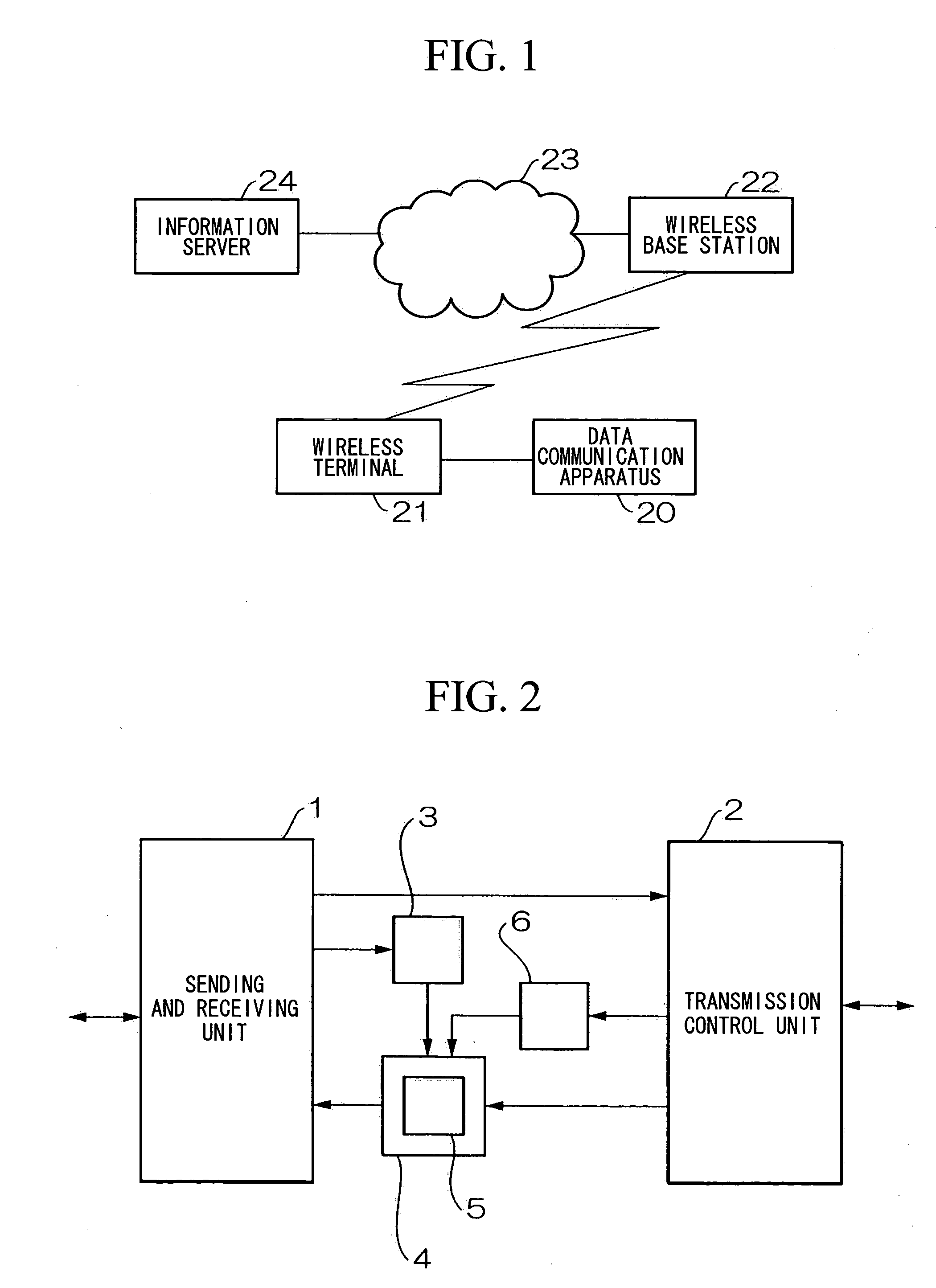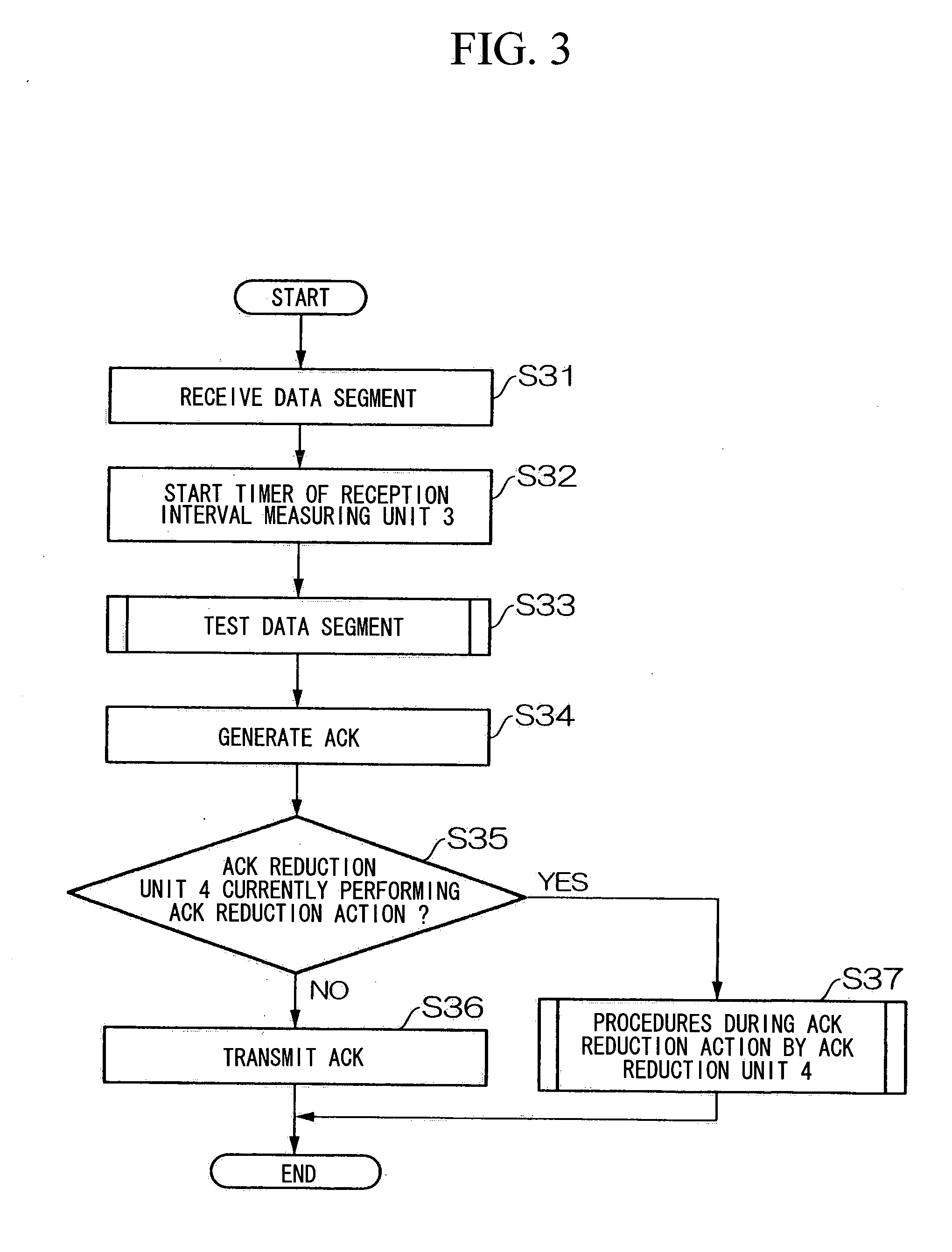Data communication apparatus
a technology of data communication and data transmission, applied in data switching networks, instruments, frequency-division multiplexes, etc., can solve the problems of large error ratio upon the wireless communication channel, large ack reduction ratio, and fluctuation of rtt (round trip time: delay)
- Summary
- Abstract
- Description
- Claims
- Application Information
AI Technical Summary
Benefits of technology
Problems solved by technology
Method used
Image
Examples
first embodiment
The First Embodiment
[0069]FIG. 1 is a block diagram showing the structure of a data communication system according to the first embodiment of the present invention. The various structures in this figure will be explained in the following. This data communication apparatus according to the first embodiment and a wireless terminal 21 are connected together by a LAN (Local Area Network) which is specified according to the IEEE802.3 standard.
[0070] This wireless terminal 21 constitutes a default gateway for the data communication apparatus 20. The first half of the following description relates to the communication apparatus 20, and the latter half relates to the wireless terminal 21. Furthermore, the wireless terminal 21 constitutes a data link to a wireless base station 22 via a wireless communication channel. In order to implement communication via this data link which is reliable and has a low error rate, a data link layer protocol (RLP: Radio Link Protocol) is executed which perfo...
second embodiment
The Second Embodiment
[0099] Next, a second embodiment of the present invention will be explained. FIG. 9 is a block diagram showing the functional structure of a data communication apparatus according to this second embodiment. In this figure, to structures which are the same as ones shown in FIG. 2 the same reference symbols are appended, and the explanation thereof will be omitted. In this second embodiment, a duplicated ACK detection unit 7 (duplicate detection unit) is provided. This duplicated ACK detection unit 7 detects duplicate of the ACKs, based upon the ACK number, which is an identification number for the ACKs. Also, when a TCP connection has been started, resources are assigned to the duplicated ACK detection unit 7 by the transmission control unit 2
[0100] A duplicated ACK is an ACK for which the ACK number has been duplicated. On the reception side, in a case in which some data segment cannot be received and a subsequent data segment has been received, multiple ACKs ar...
third embodiment
The Third Embodiment
[0112]FIG. 13 is a block diagram showing the structure of a data communication apparatus according to the third embodiment of the present invention. In this data communication apparatus, wireless communication is processed with a first device, which is a base station not shown in the figure, using a wireless data sending and receiving unit 61 and a retransmission control unit 62. In this communication, a TDMA (time division multiple access) technique is used upon the forward link (the reception side), and its transmission speed is a maximum of 2.4 Mbps and an average of 600 kbps. Furthermore, a CDMA (code division multiple access) technique is used upon the uplink (the transmission side), and its transmission speed is a maximum of 153.6 kbps. Yet further, in this data communication apparatus, as a data interface, input and output of data with other devices is performed with a serial interface unit 611 according to the USB (Universal Serial Bus) standard. This ext...
PUM
 Login to View More
Login to View More Abstract
Description
Claims
Application Information
 Login to View More
Login to View More - R&D
- Intellectual Property
- Life Sciences
- Materials
- Tech Scout
- Unparalleled Data Quality
- Higher Quality Content
- 60% Fewer Hallucinations
Browse by: Latest US Patents, China's latest patents, Technical Efficacy Thesaurus, Application Domain, Technology Topic, Popular Technical Reports.
© 2025 PatSnap. All rights reserved.Legal|Privacy policy|Modern Slavery Act Transparency Statement|Sitemap|About US| Contact US: help@patsnap.com



